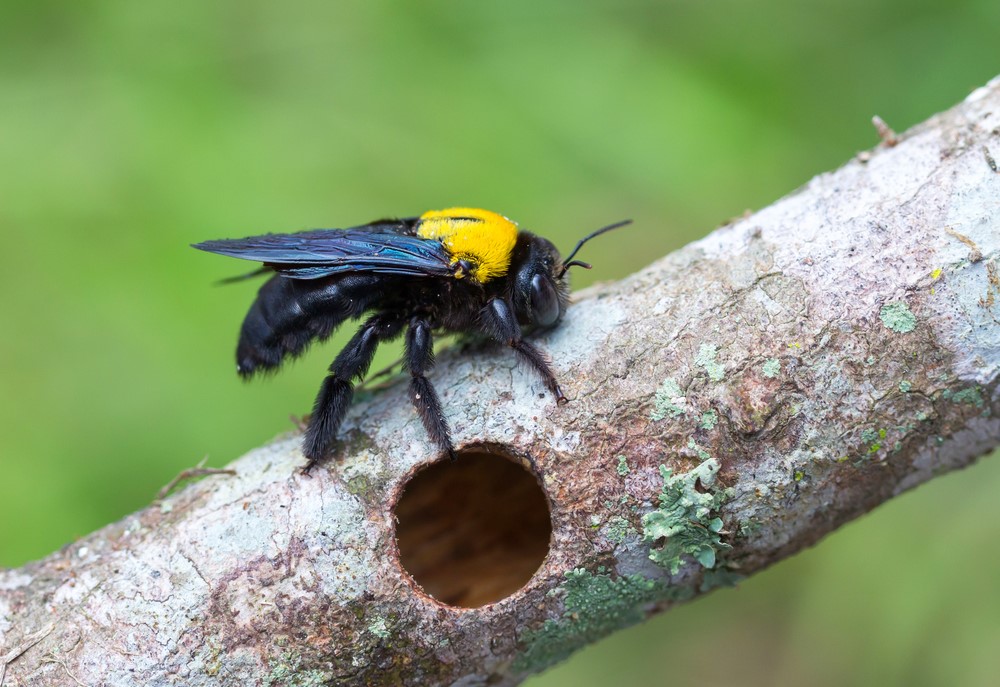
Serving Southwest Ohio and Northern Kentucky

info@TheBugBusters.net.
Attention Realtors and Loan Officers: Click the link for our online inspection sheet.
About Carpenter Bees
Carpenter Bees
Carpenter Bees are the huge black and yellow bees seen in the spring to early summer hovering around the eaves of a house or the underside of a deck or porch rail. They are often mistaken for bumble bees, but bumble bees have hairy bodies and build their nest in the ground. Carpenter Bee bodies are mainly hairless, and their nests are in the areas as mentioned above. The Carpenter Bee gets its name due to their tendency to excavate tunnels in wood with its strong jaws. The round half-inch diameter entrance holes are usually found on the underside of a board. A trace of coarse sawdust is often found on the area beneath the hole. Wooden decks, overhangs and other exposed wood on houses and buildings are prime targets. Painted and treated woods are less preferred, but they are not immune to attack.
Unpainted or stained cedar, cypress and redwood shingles and siding are also attacked despite their pest-resistant reputations. Carpenter Bees, like their distant relatives, the carpenter ants, differ from termites in that they do not consume the wood as food. They simply excavate tunnels for nesting sites.
Carpenter Bees become dormant over the winter months overwinter, often sleeping inside old nest tunnels. People mistakenly think when the bees disappear, they are gone. They are not, they just are not swarming anymore, at least until the next spring. They emerge in April and May with the males usually the first to appear. Males can be distinguished from females by a whitish spot on the front of the face. The males do not have stingers, but they are territorial and will harass other bees and people who dare venture near their areas. Females can sting, but rarely do. The biggest problem with carpenter bees is the damage caused by them excavating their tunnels, not the danger of being stung by one.
DAMAGE
Carpenter bees can cause serious structural damage to wood if they are allowed to drill tunnels over several years. Not only that but woodpeckers feast on their larvae and can cause their share of damage searching for them. Holes on exposed surfaces may lead to damage by wood-decaying fungi or attack by other insects, such as carpenter ants.
Adult Carpenter Bee and its hole
Dayton, OH 45401-3151
Phone 937-256-6475
info@TheBugBusters.net
Powered by w3.css